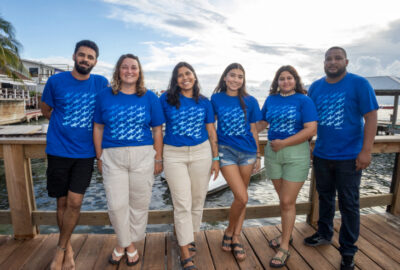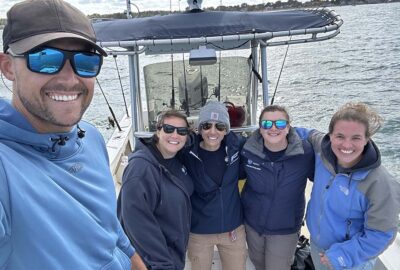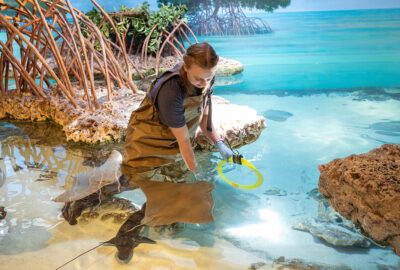Please note: We strongly recommend purchasing tickets online in advance during the heat wave, as our ticket booth is located outdoors.
How to Catch a Shark in the Shallows
This is the second part of a series by Dr. Nick Whitney on his work on nurse sharks with Wes and Theo Pratt in Dry Tortugas National Park this summer.
By Nick Whitney, PhD on Tuesday, September 11, 2018

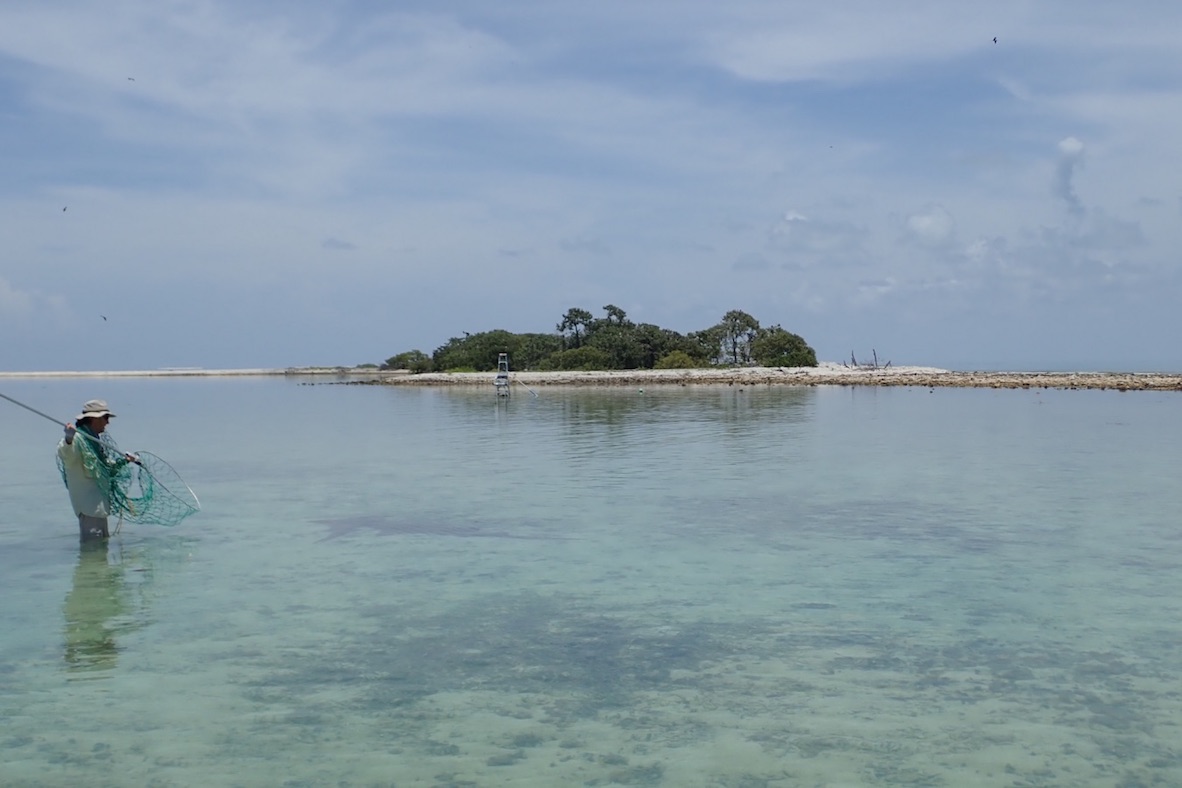
Read the first post in the series, How Do Sharks Mate?
All marine science fieldwork can be challenging, and catching and tagging large sharks in shallow water with a two-person crew presents a unique set of difficulties.
How do you catch a 9-foot shark in waist-deep water? With a giant dip net! This is a technique that Wes Pratt developed over a decade ago after several years of spearing tags into the backs of free-swimming sharks and using large teams of people to surround the area with nets so the animals could be rounded up and tagged one by one.
The spear-tagging method didn’t allow close examination and measurements of the animal, and the tags would usually stay attached only for a year or two. The roundup method required seven to 10 trained staff all on site at once, and would disturb the entire area and disrupt any shark mating behavior that would have otherwise happened that day.
Wes finally realized he needed a way to handle and tag the animals that didn’t require miles of nets and an army of shark wranglers, so he started building his own solo shark nets and scooping them up himself. These nets have evolved over the years, but they typically use large mesh trawl netting tied to a hoop at least 3 feet in diameter. The bag of the net is 10 feet long and can be opened on either end to release sharks after tagging. The net handle itself is a lightweight, 10-foot, aluminum pole, as in “wouldn’t touch it with a 10-foot pole.”

Wes’s technique involves one or two people with nets slowly sneaking up on the sharks when they’re resting in the shallows (or even better – when they’re mating) and lowering the net hoop over their heads so that when they try to swim away, they end up swimming into the bag of the net where they can be tied off and comfortably restrained, measured, and tagged right there in the shallows where they were captured.
Piece of cake, right?
It turns out that catching even distracted, relatively slow-moving nurse sharks using this technique can be pretty challenging, and we’ve had an assortment of … let’s call them “adventures” associated with these captures over the years. The most notable one (in 2010) required me to get a titanium implant to replace a tooth that was knocked out during our capture of a shark that would become known as “Dentina.”
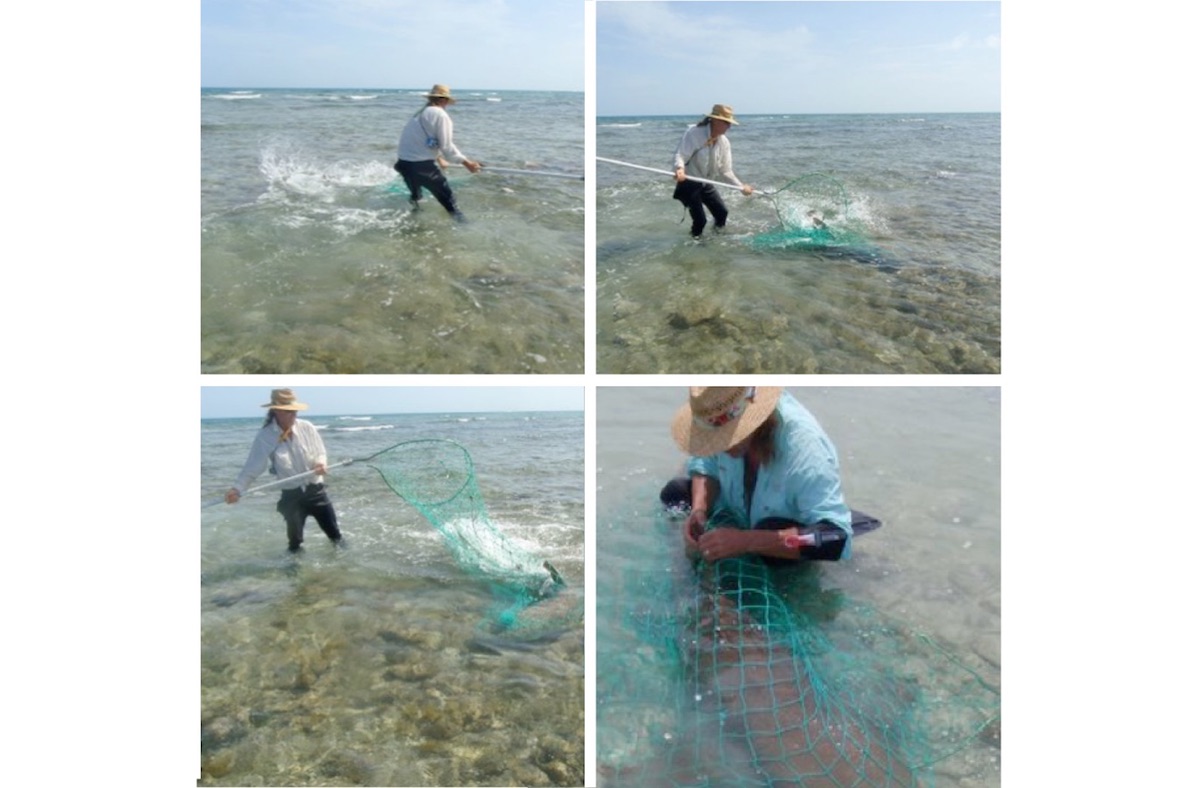
In addition to the usual challenges, we have some uninvited guests in the study site this year. Several non-nurse sharks, including lemons, Caribbean reef sharks, and an occasional bull shark are showing up to the mating events in deeper water, apparently attracted by the commotion of large animals struggling. It probably sounds like some kind of feeding frenzy to them underwater, and they’re coming in hot and fast to see if there’s a meal to be had.
In the days before I arrived on site, these other sharks had been racing in and giving Wes a close look, and even an occasional bump in their excitement. One beautiful 7-foot great hammerhead even circled him for 10 minutes one day, allowing him to get some close-up underwater pics.
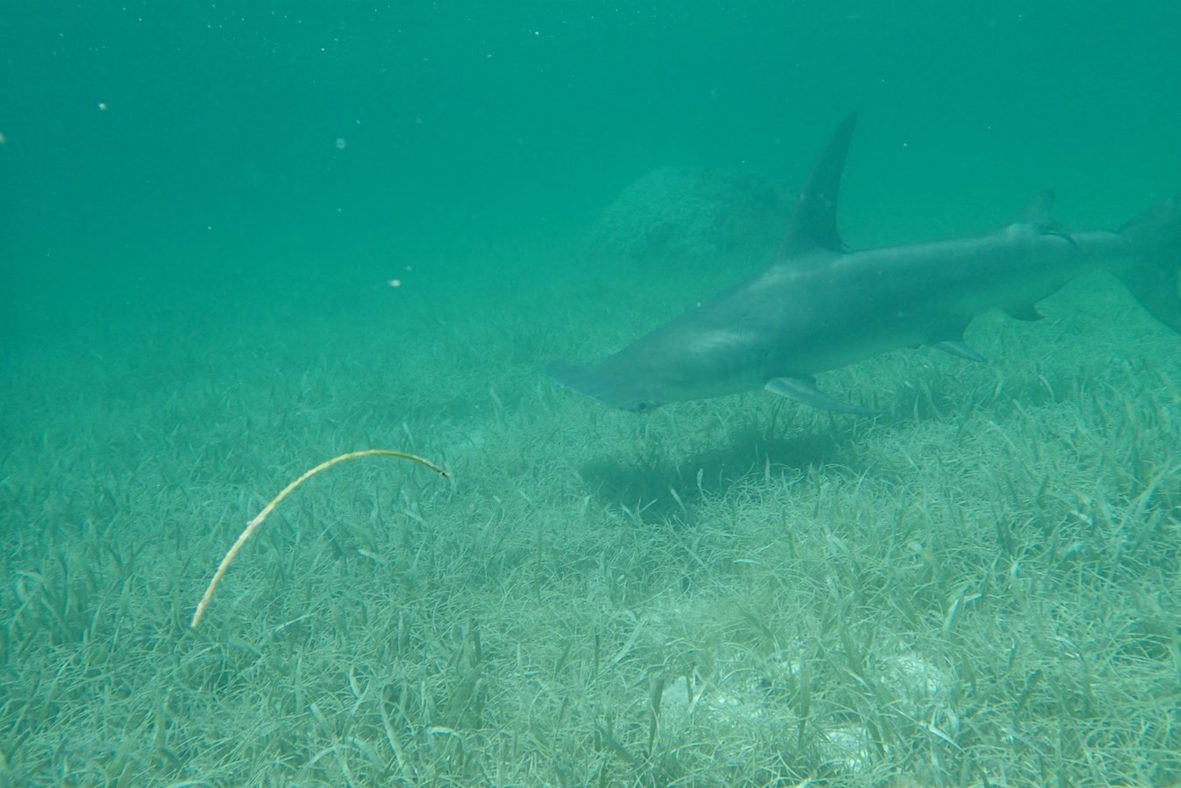
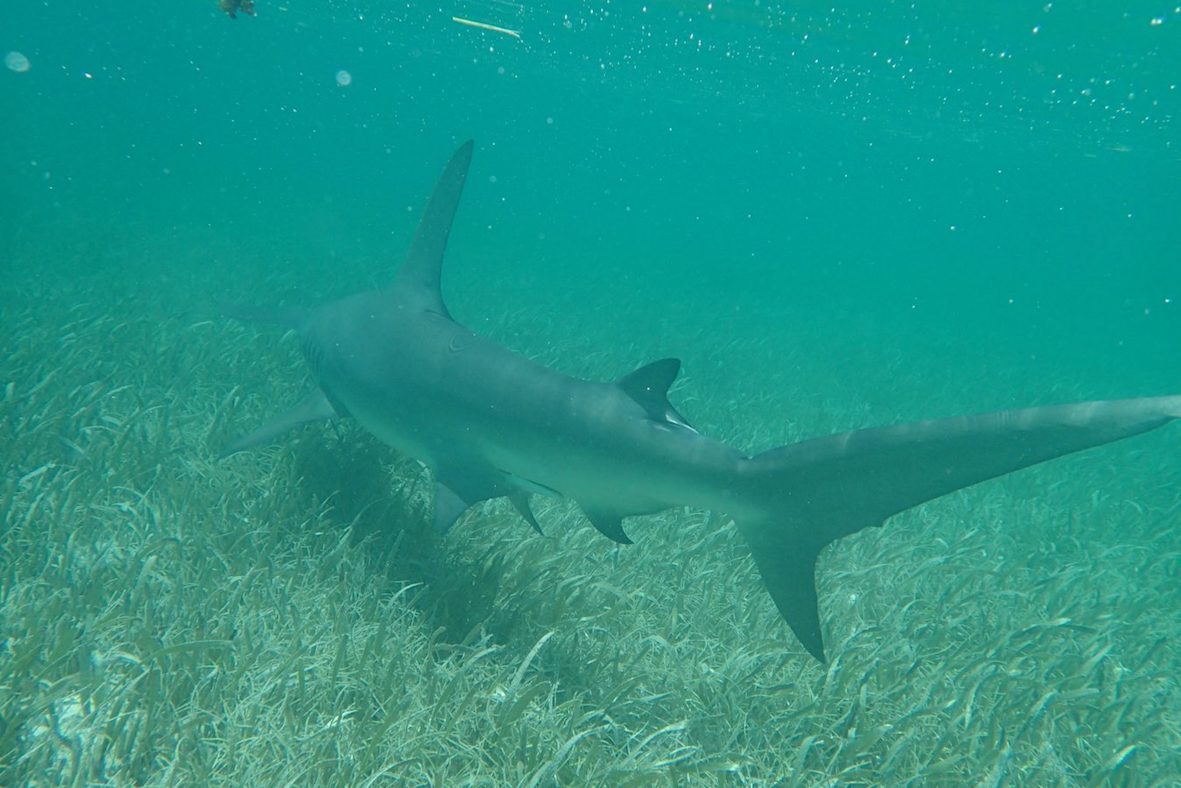
Wes is as comfortable in the water with sharks as you can get, but it wouldn’t take much for an overly curious or excited animal to ruin your day or your trip. So we have agreed to use the buddy system for capture attempts in waste-deep water or deeper.
Of course, Wes’s version of the buddy system involves him racing out to deep water with a net at the first sign of a mating event while I scramble to find something – another net handle, a kayak paddle, anything – that I can use to fend off sharks and cover his back if I can ever catch up with him. He’s surprisingly quick whether traveling by foot or by paddle, despite being born during the Truman administration.
I’ve also forgotten how good he is at this, and he surprises me by successfully capturing a big adult male out of one of the first mating events we see, even though I thought it was too far away and too deep to even try.
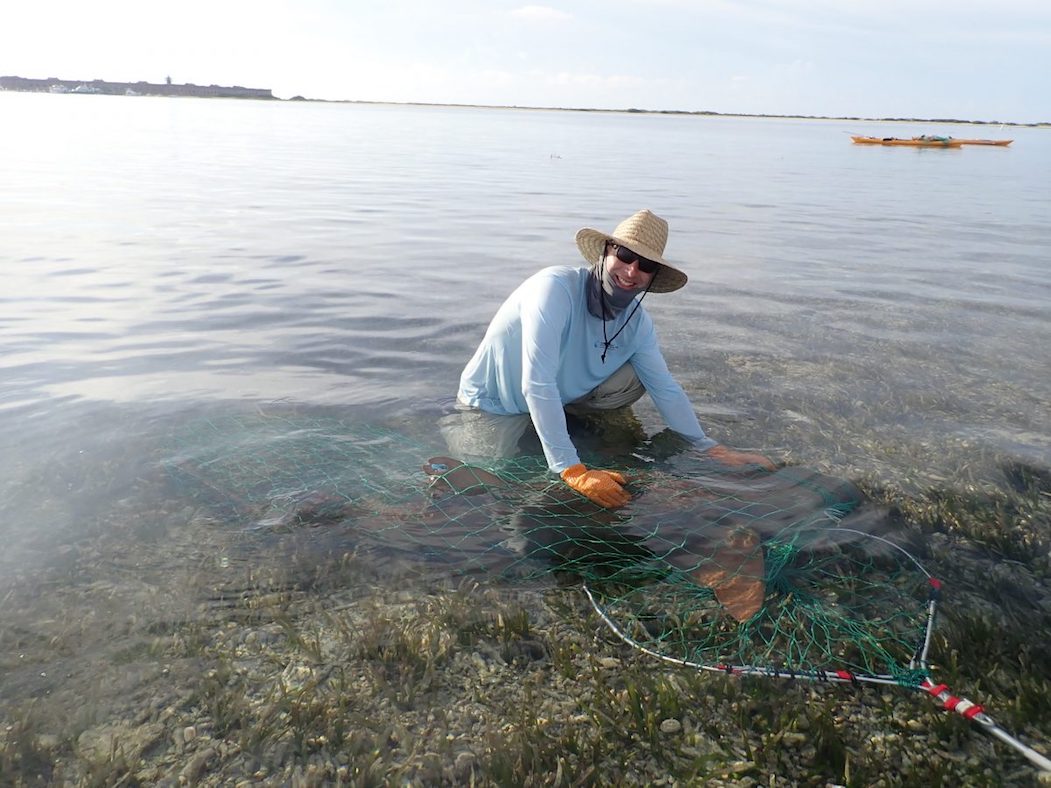
We bring the shark into the shallows for measurements and tagging, and it’s the first of many moments of truth on this trip. We will finally get to test one of our new fin clamps for the first time.
Read more about Dr. Whitney’s adventures in the Dry Tortugas!

